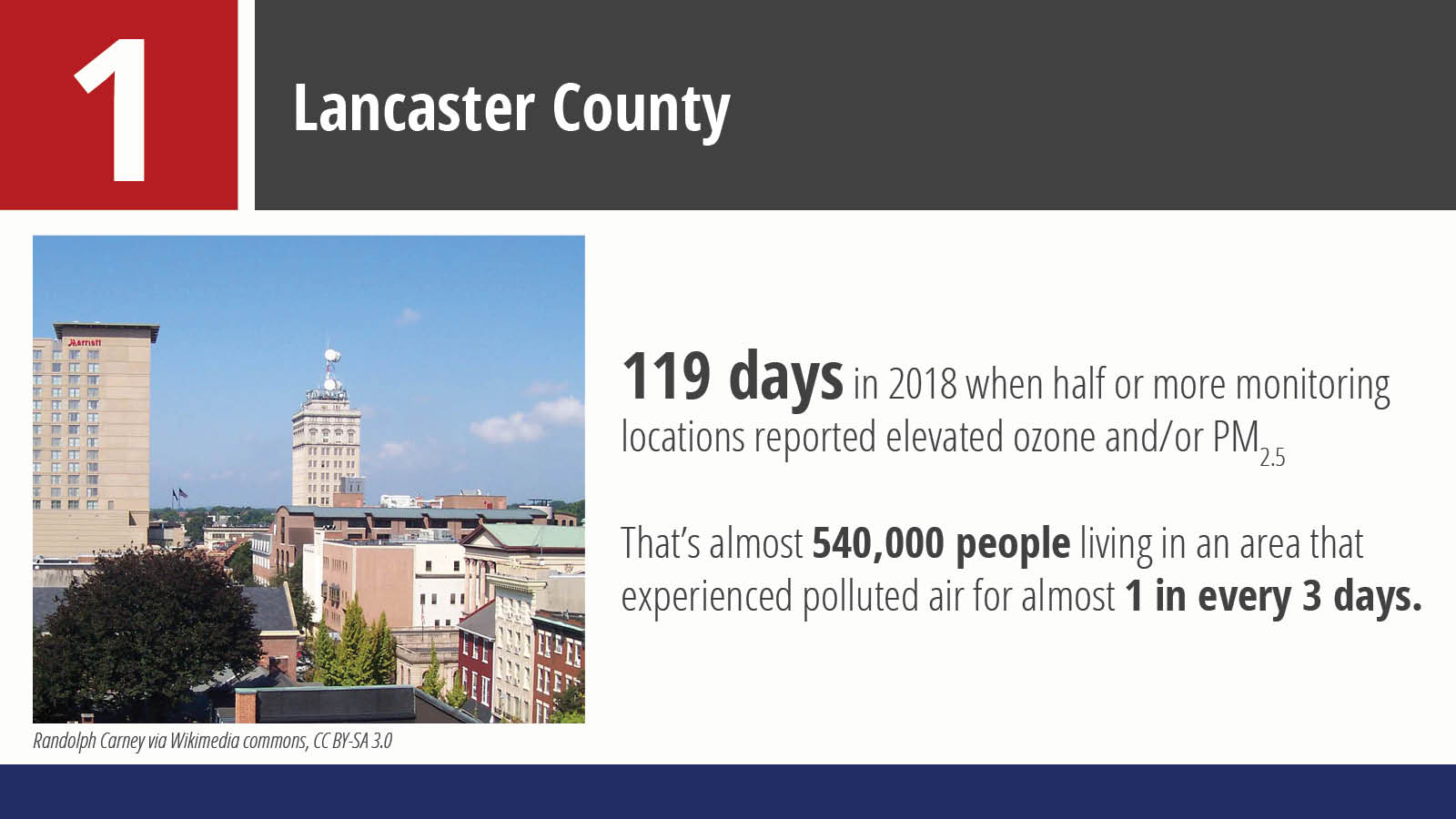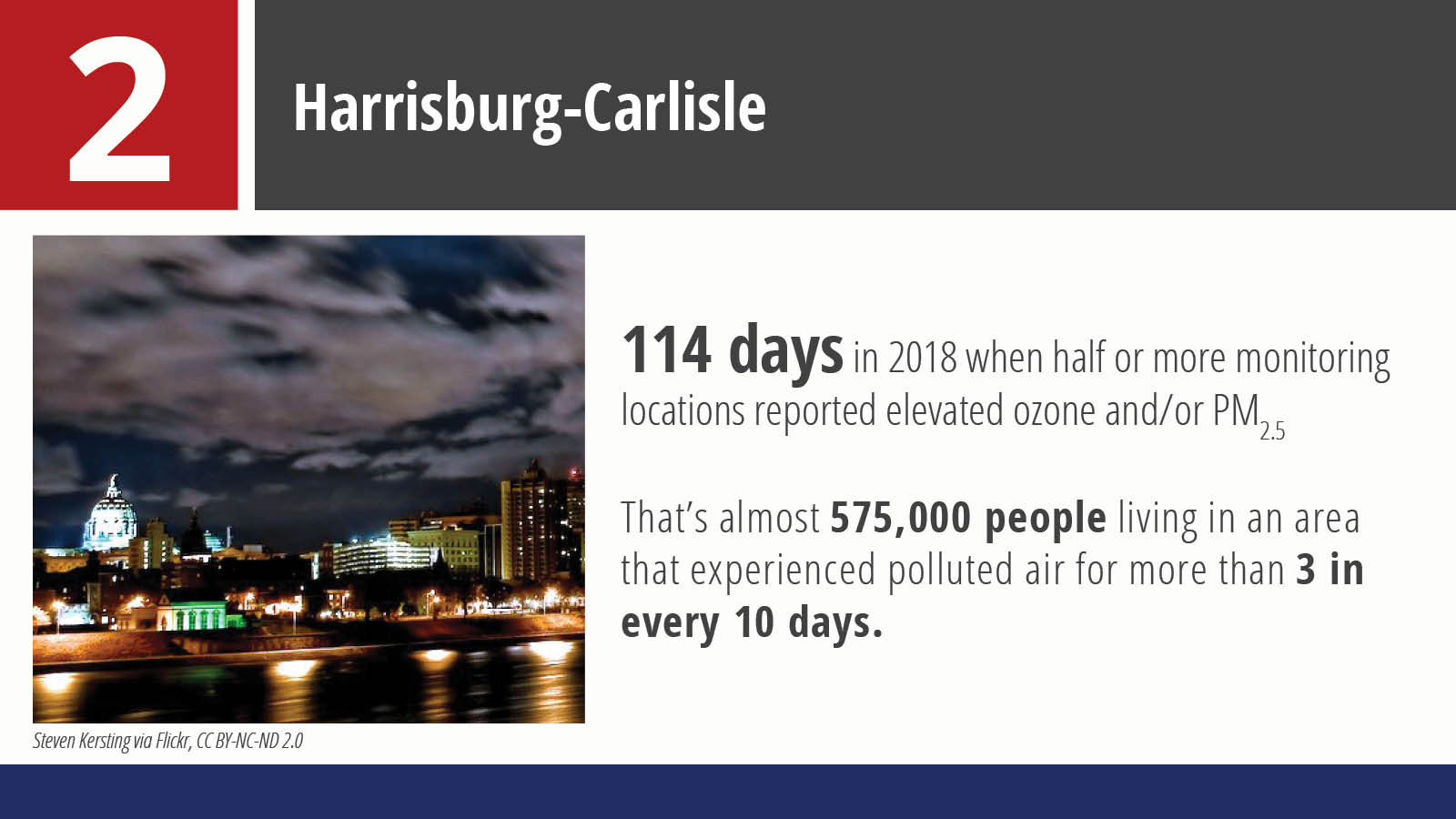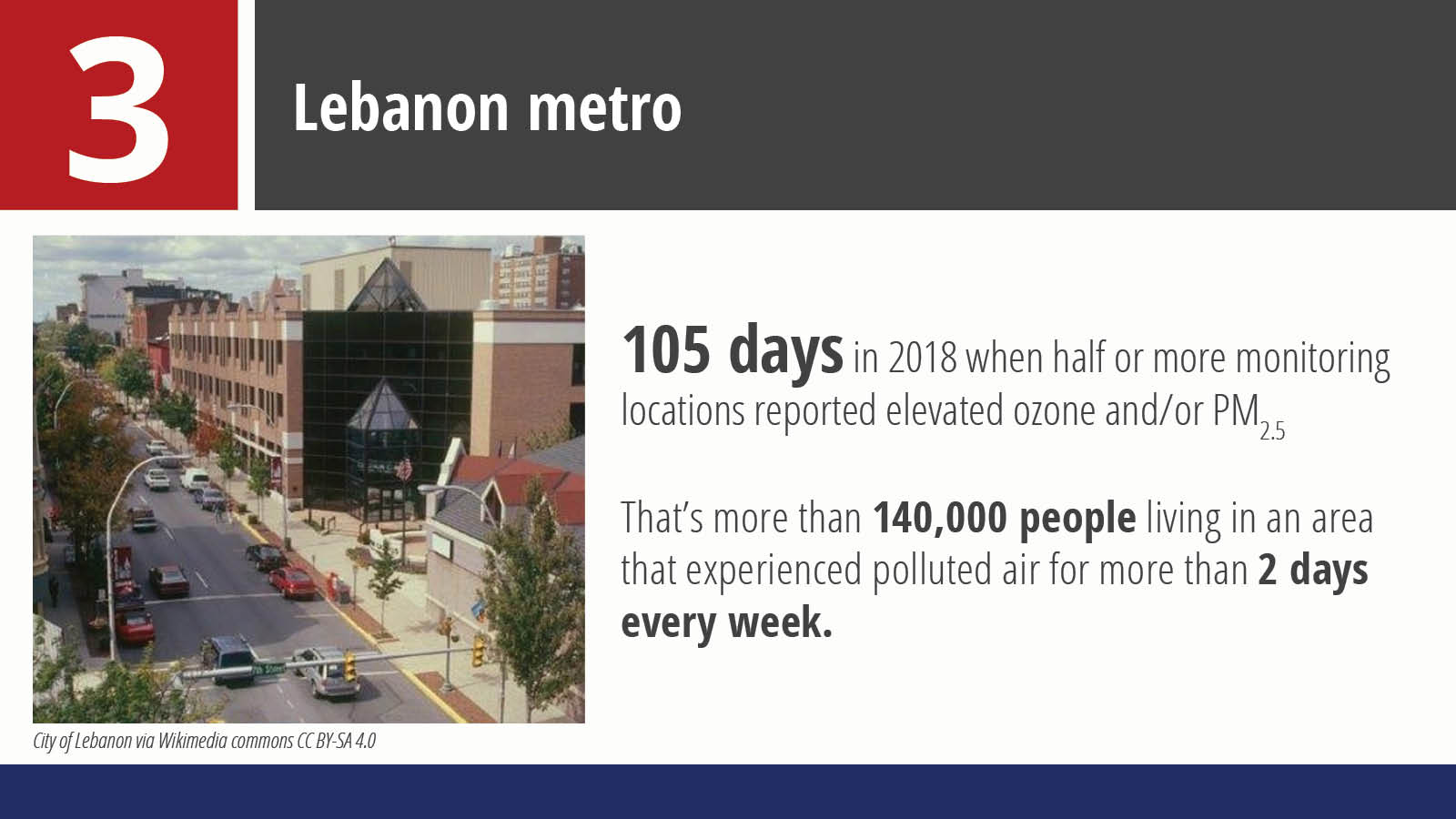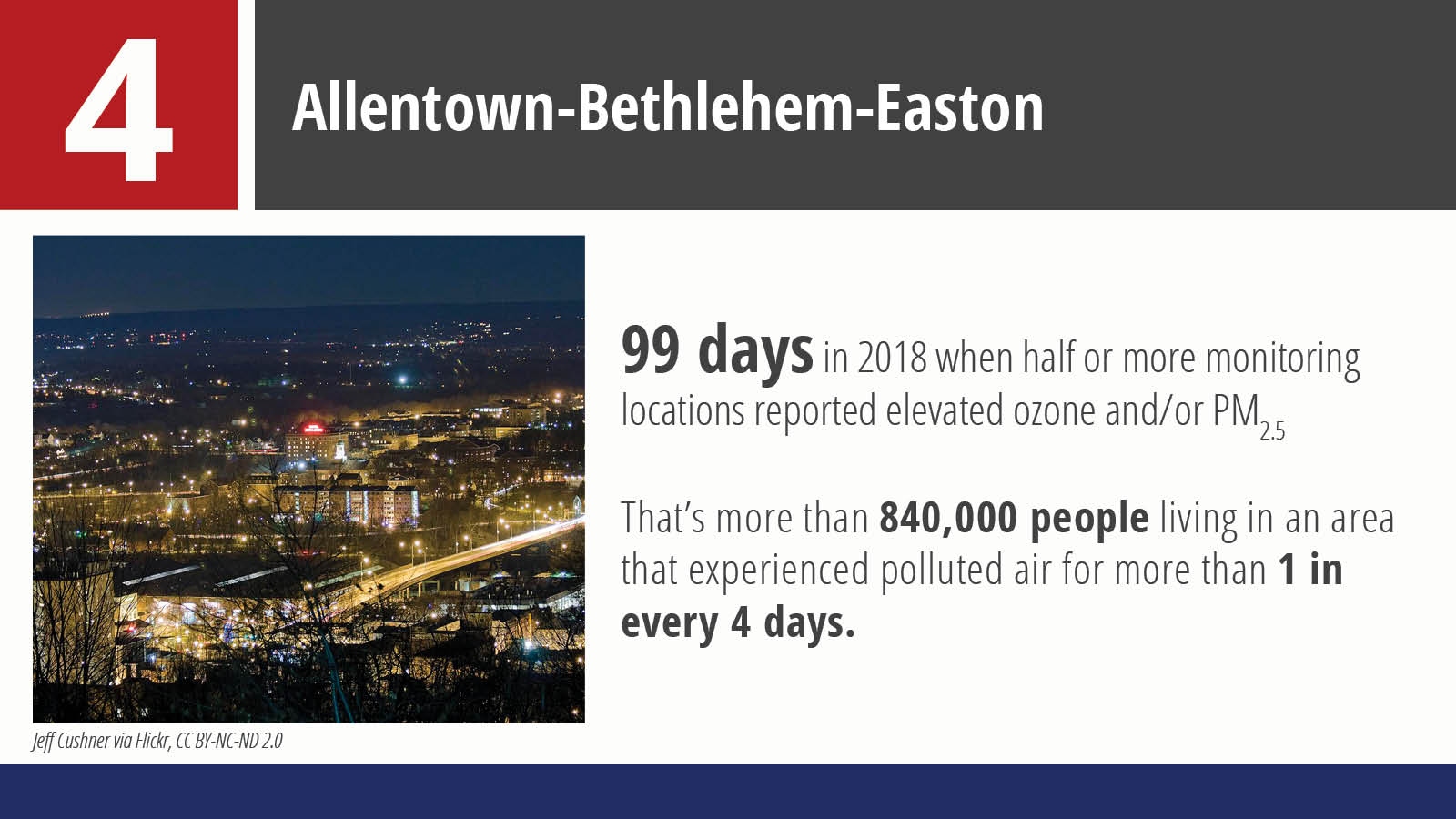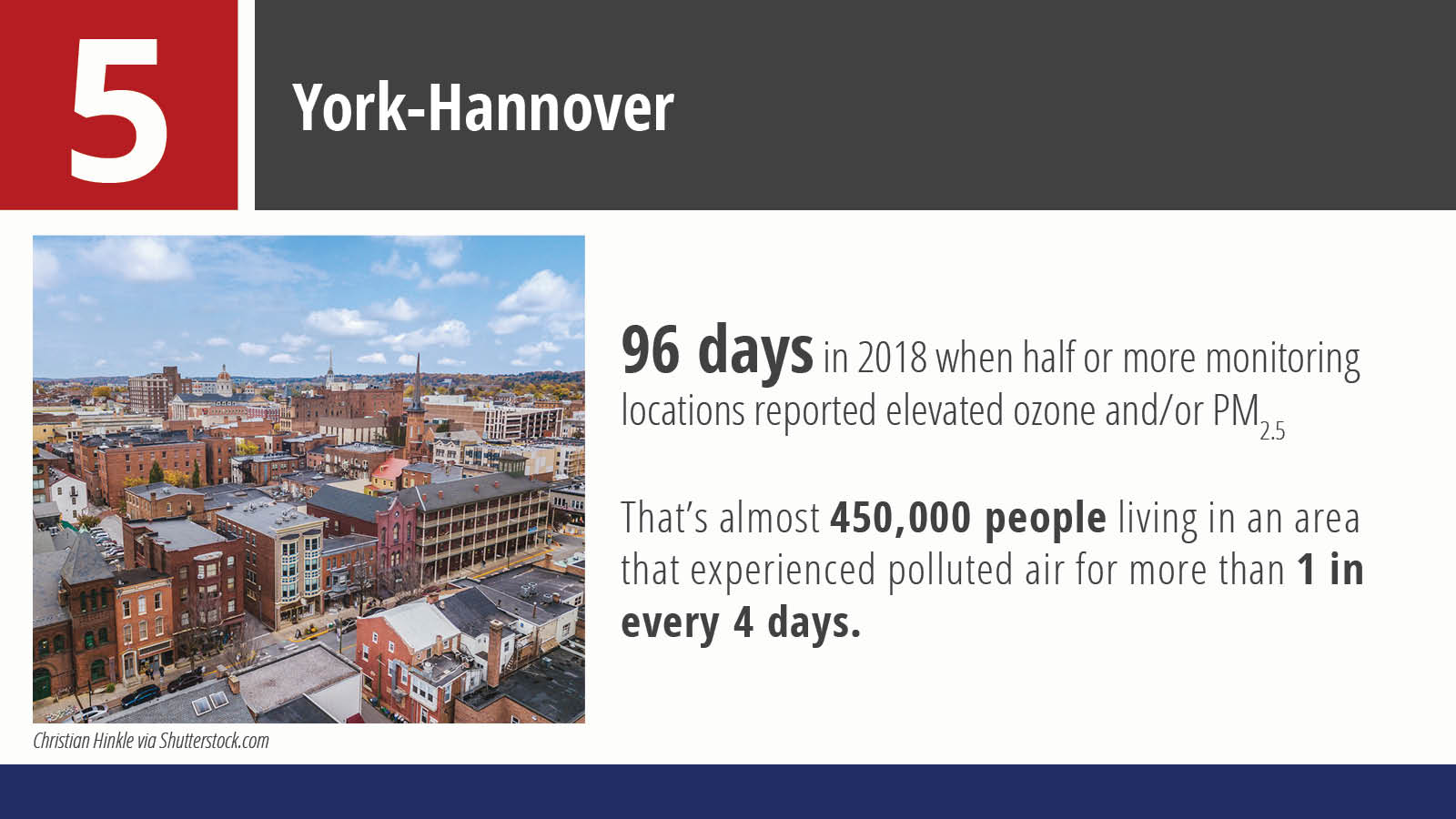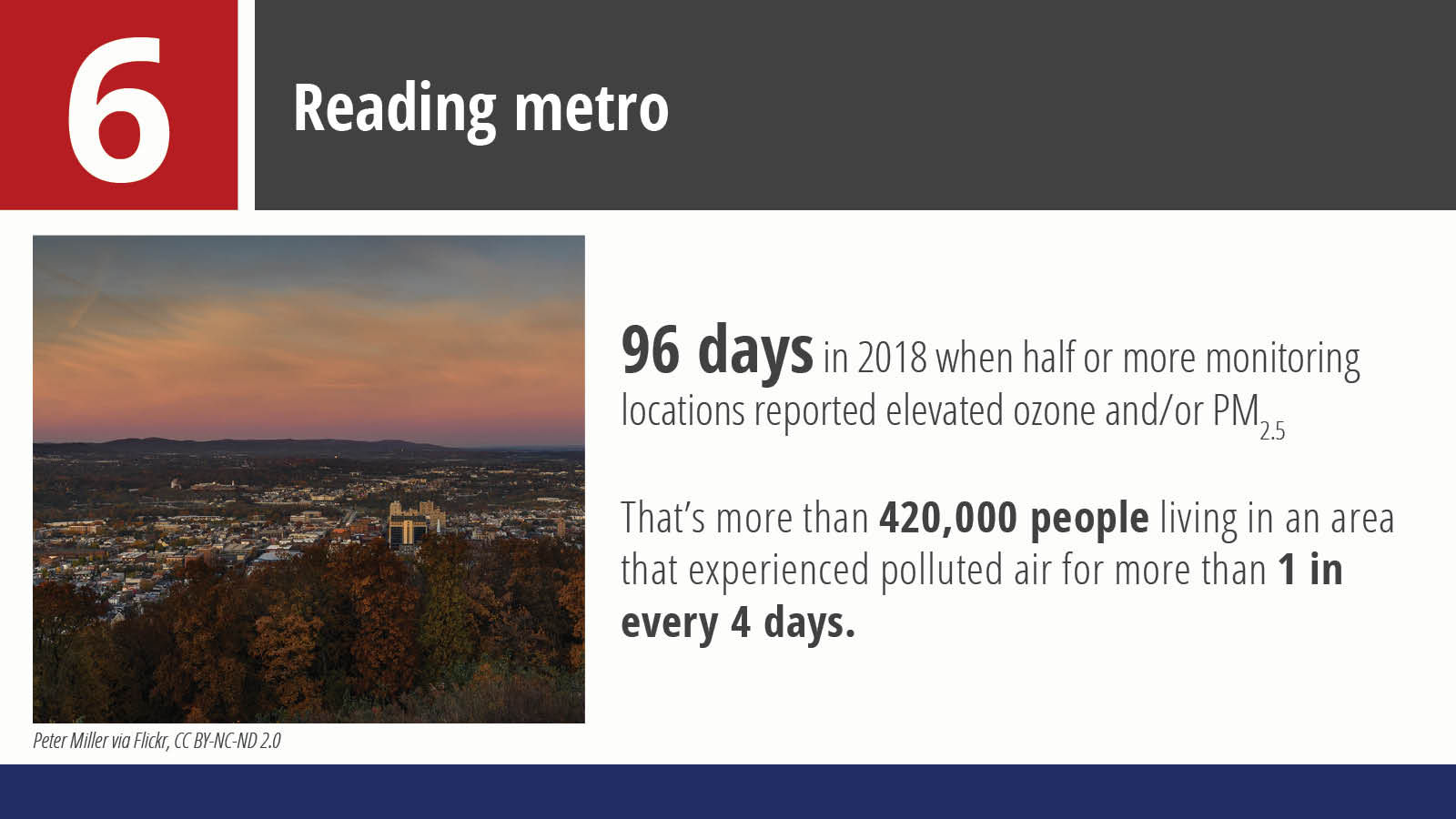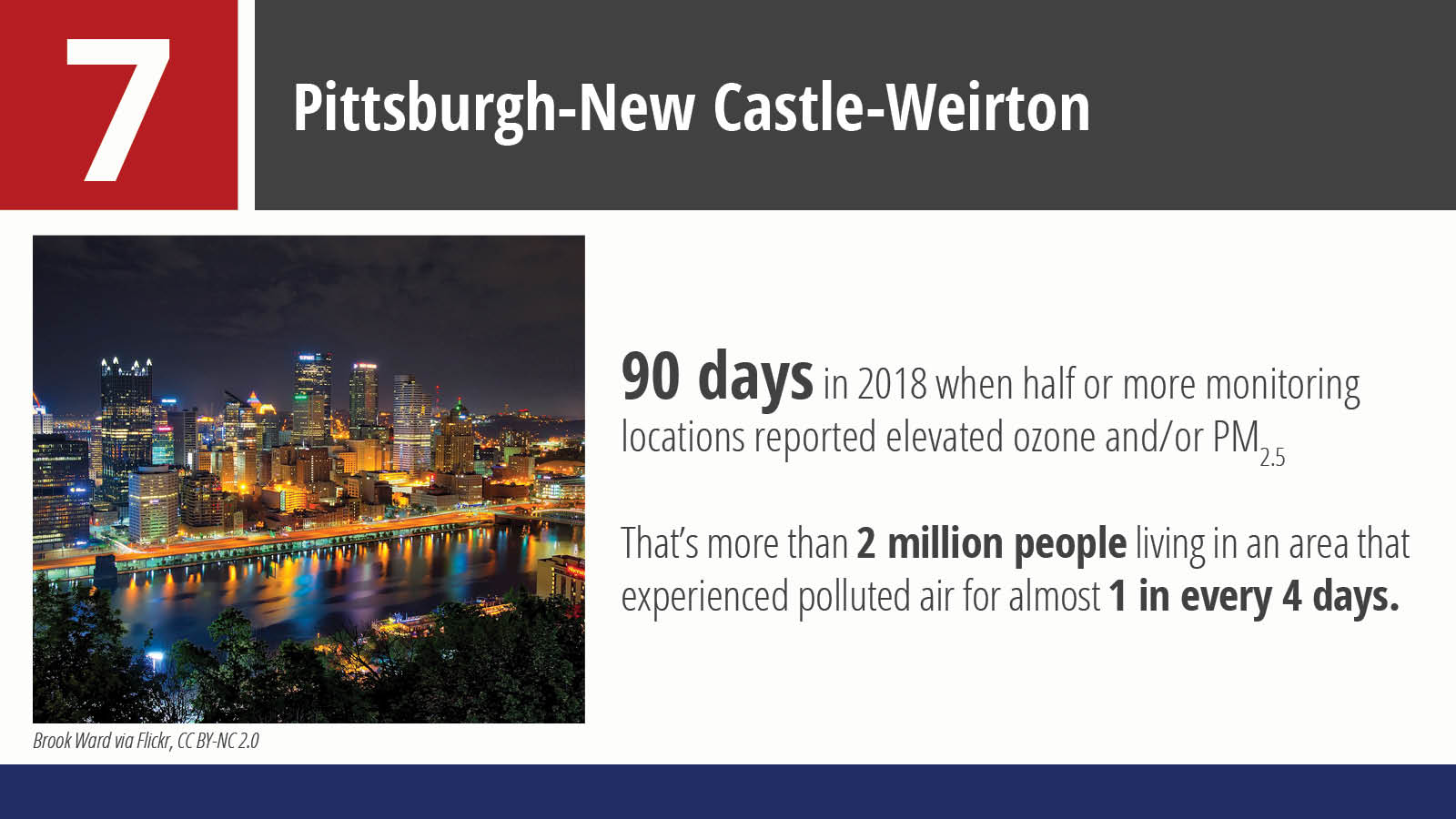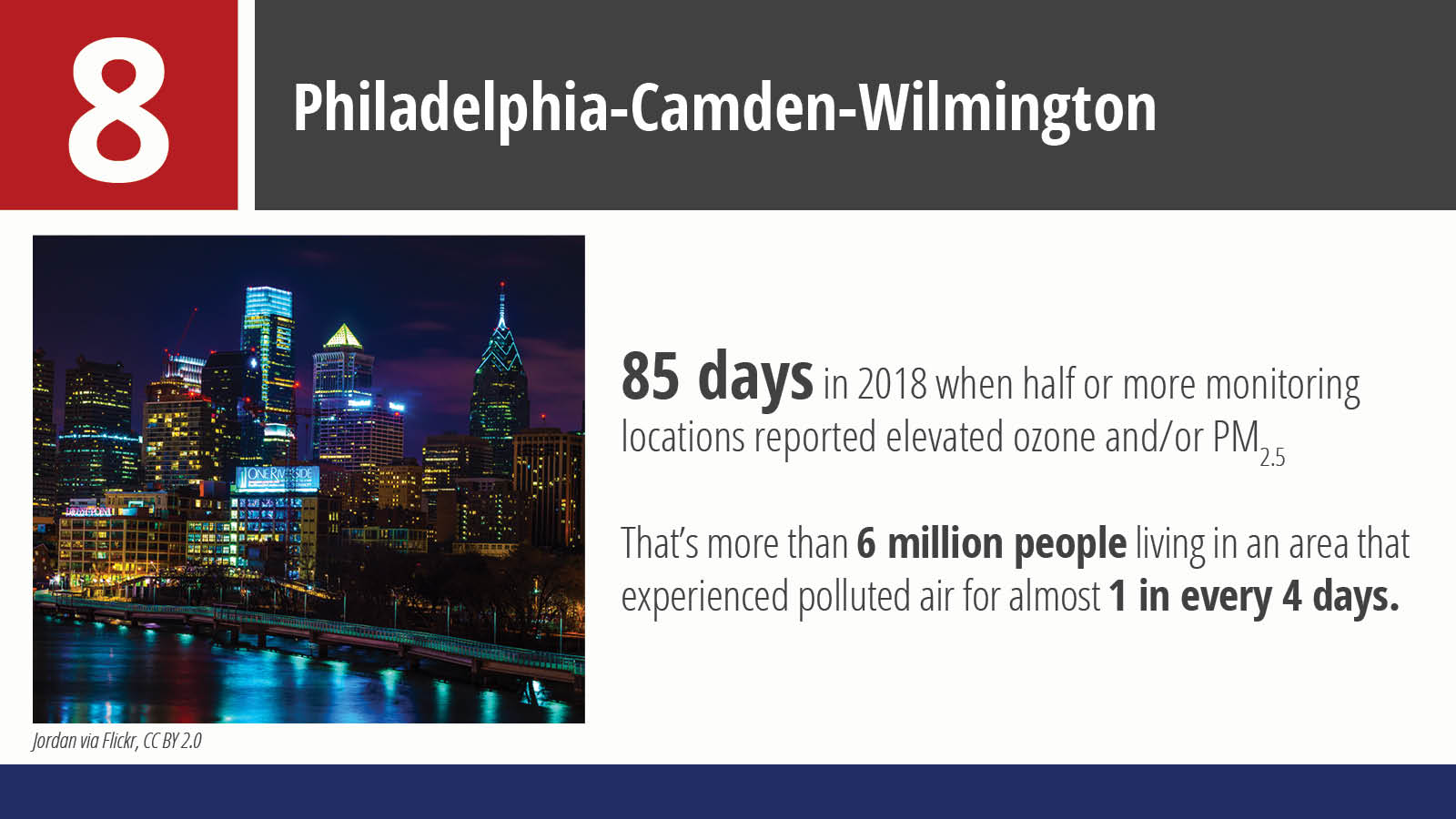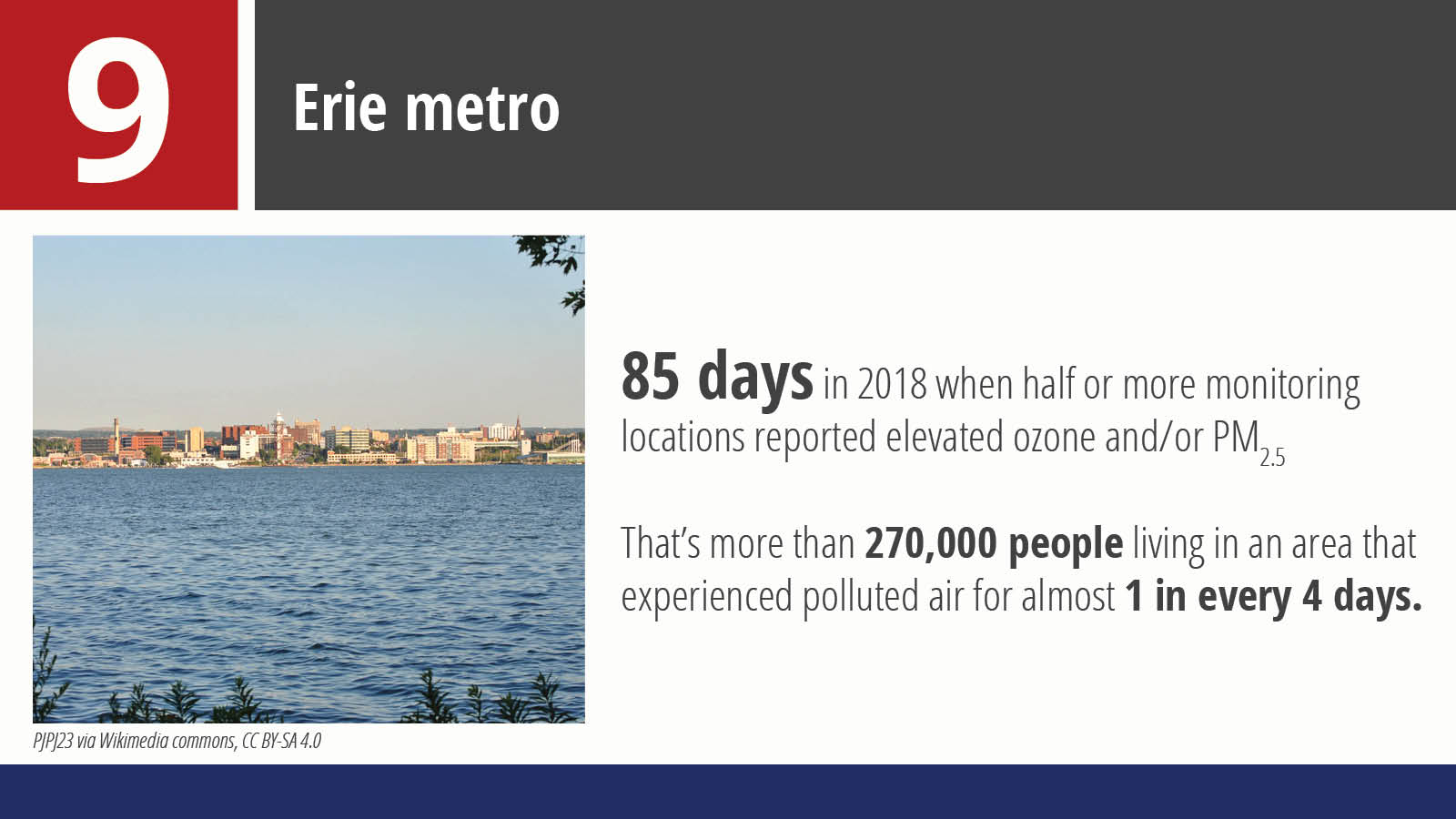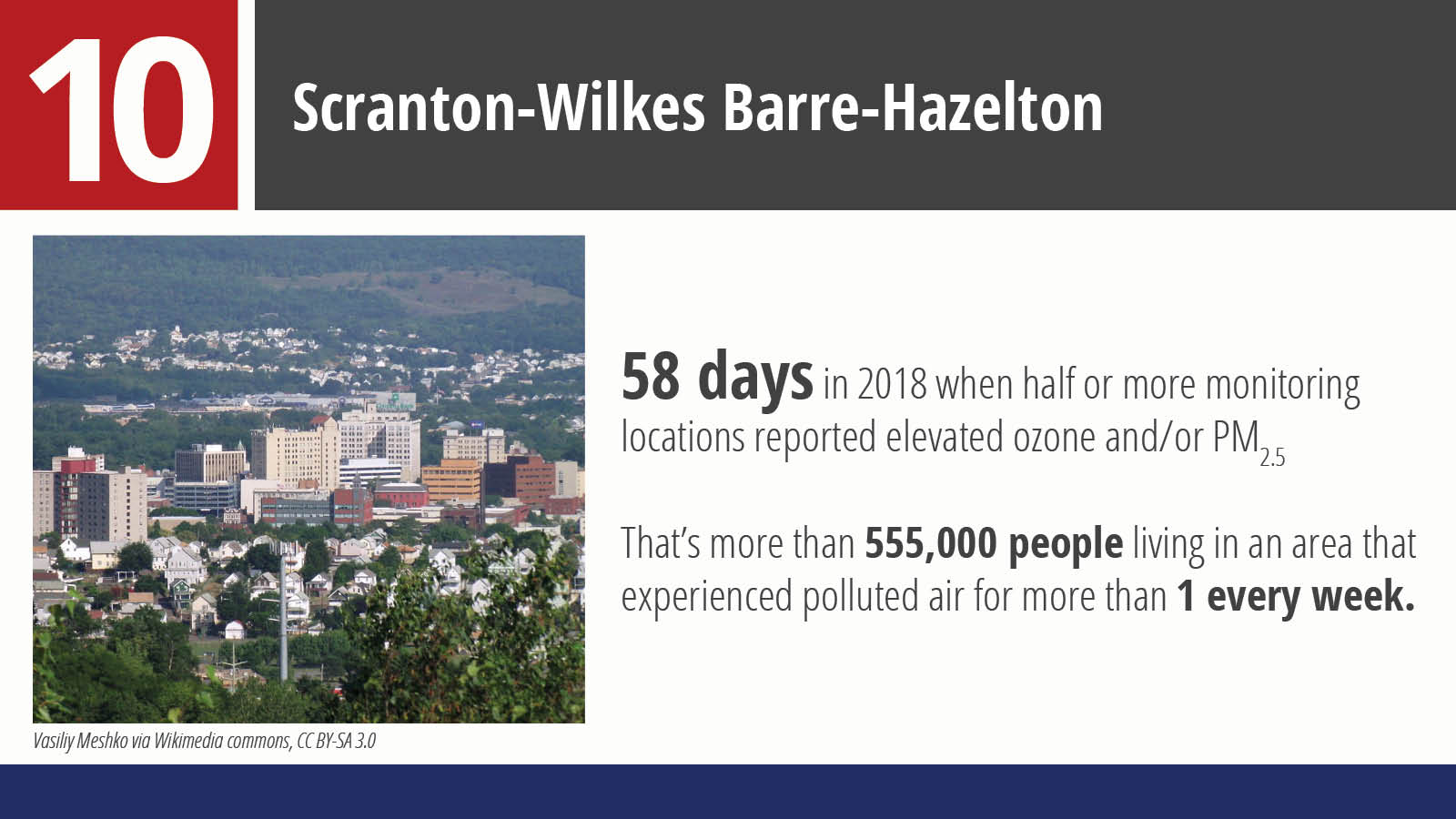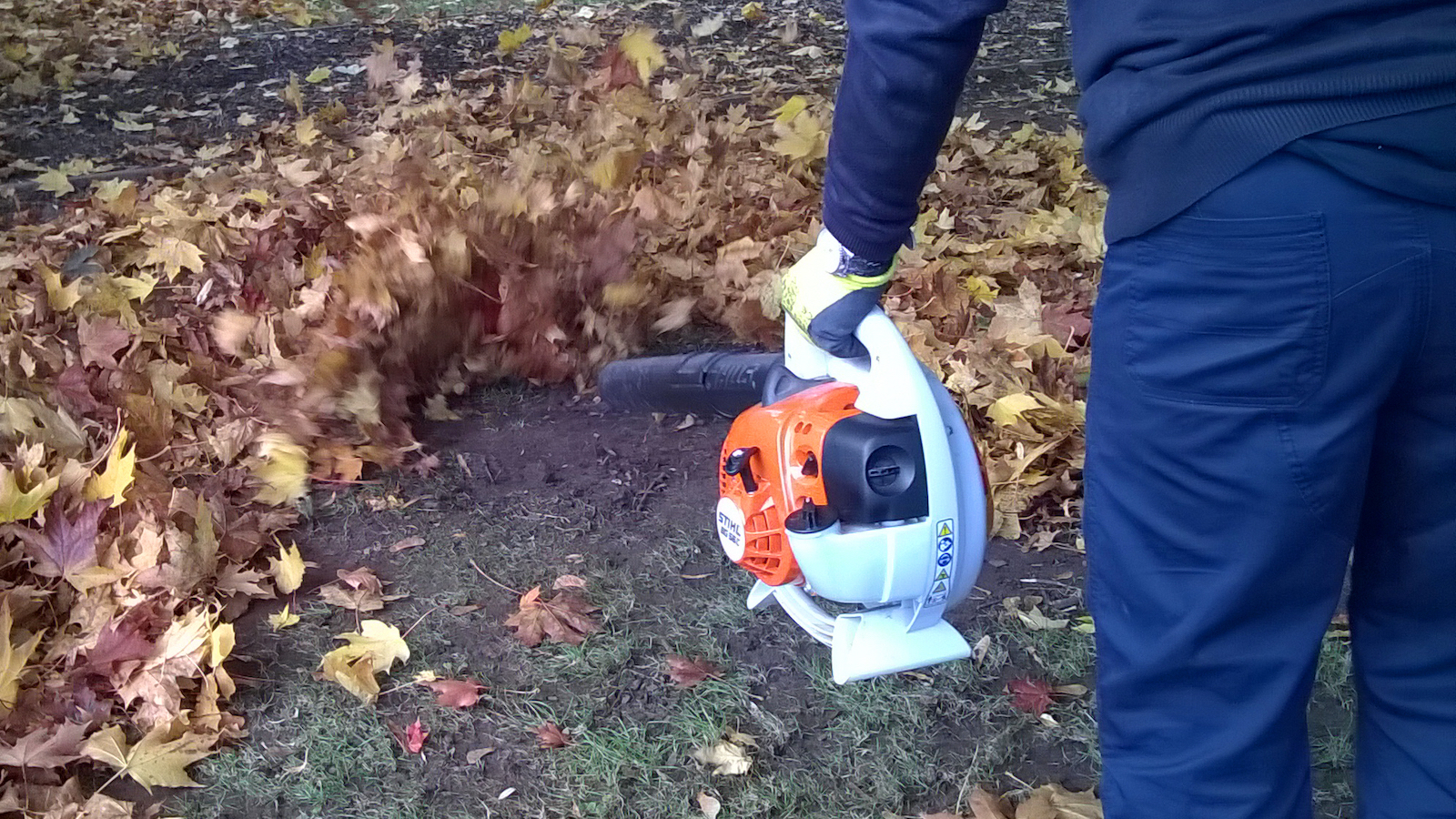
Trouble in the Air
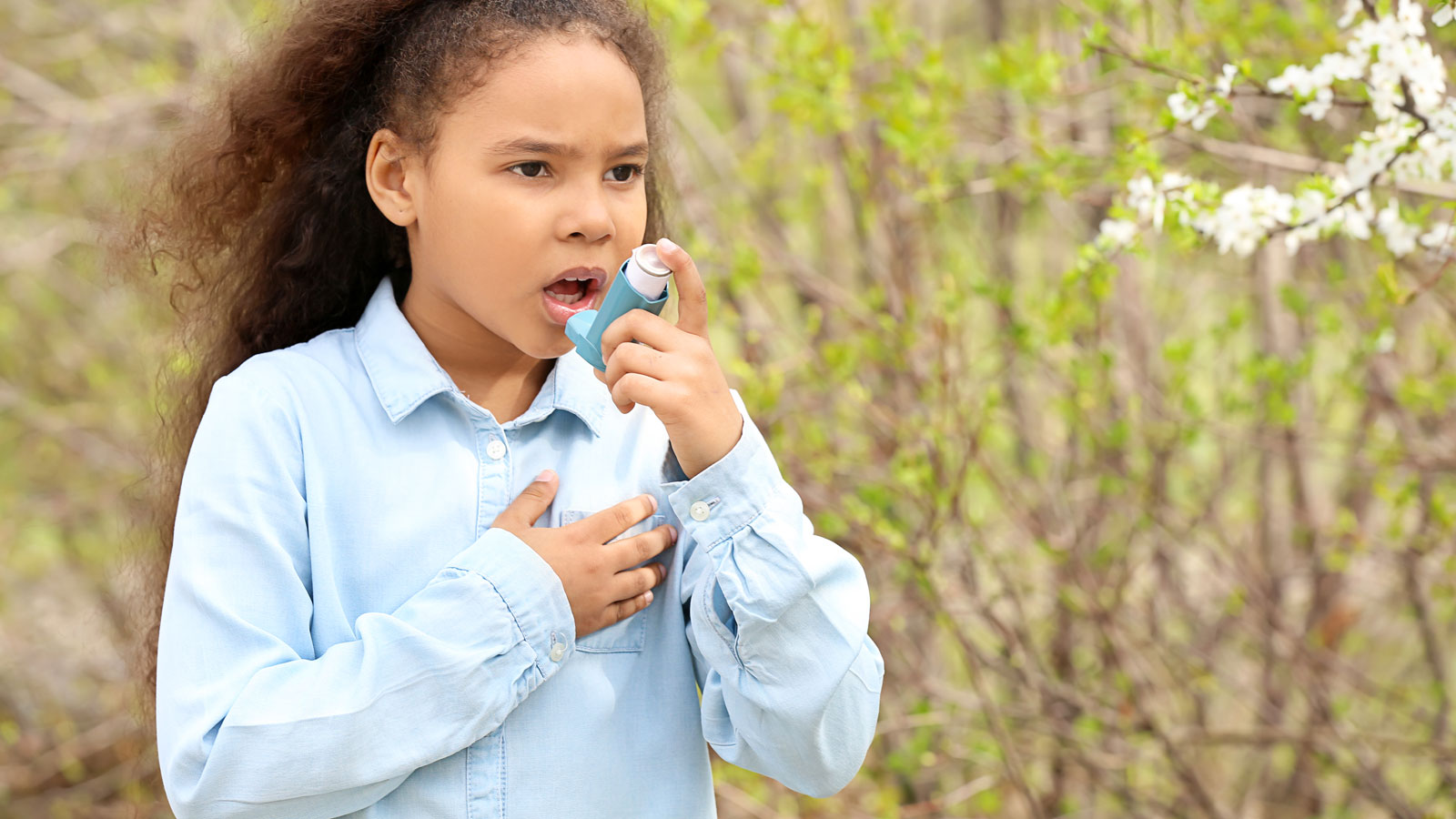
A report created by the PennEnvironment Research & Policy Center and Frontier Group
DOWNLOAD THE FULL REPORTDOWNLOAD A FACTSHEET
We should all be able to breathe clean air. It’s true that the days of thick smog making it difficult to see horizons in the distance or city skylines even a few blocks away are largely behind us. But people across Pennsylvania still regularly breathe dirty air that increases their risk of premature death and can trigger asthma and other adverse health effects.
Sadly, our report shows that the air in many Pennsylvania communities is probably not as clean as you might think. In 2018, 11 million Pennsylvanians lived in areas that experienced unhealthy air quality for at least 1 in 4 days in which ground-level ozone (the main ingredient in smog) or particulate pollution was above the level that the EPA has determined puts our health at risk.
These unhealthy air days put Pennsylvanians in cities, suburban areas, and rural areas, at risk. At the same time, our study shows that millions more Americans across the country are exposed to damaging levels of air pollution.
Each year, millions of Pennsylvanians suffer from adverse health impacts linked to air pollution, and tens of thousands have their lives cut short:
• Air pollution from sources such as vehicles and power plants was responsible for an estimated 4,800 premature deaths in 2018 in Pennsylvania alone1
• Air pollution is linked to health problems including respiratory illness, heart attack, stroke, cancer and mental health problems. Research continues to reveal new health impacts. For example, maternal exposure to air pollution such as fine particulates (PM2.5) and ozone is associated with a higher risk of low birth weight, pre-term birth and stillbirth.2 For older adults, long-term exposure to particulate pollution has been associated with an increased risk of Alzheimer’s disease and other forms of dementia.3
• Air pollution’s effects are pronounced among vulnerable populations, including children, pregnant women and the elderly. Research has found that children exposed to particulate pollution can suffer from lung development problems and long-term harm to lung function.4
• Levels of air pollution that meet current federal air quality standards can be harmful to health, especially with prolonged exposure. Researchers can detect negative health impacts, such as increased premature deaths, for people exposed to pollution at levels the EPA considers “good” or “moderate.”5 Current federal standards are less stringent than those recommended by the World Health Organization.6 Moreover, the EPA cautions that unusually sensitive people may experience health effects at “moderate” levels. For these reasons, the analysis in this report includes air pollution at or above the level the EPA labels “moderate,” corresponding with a rating yellow or higher in its Air Quality Index.
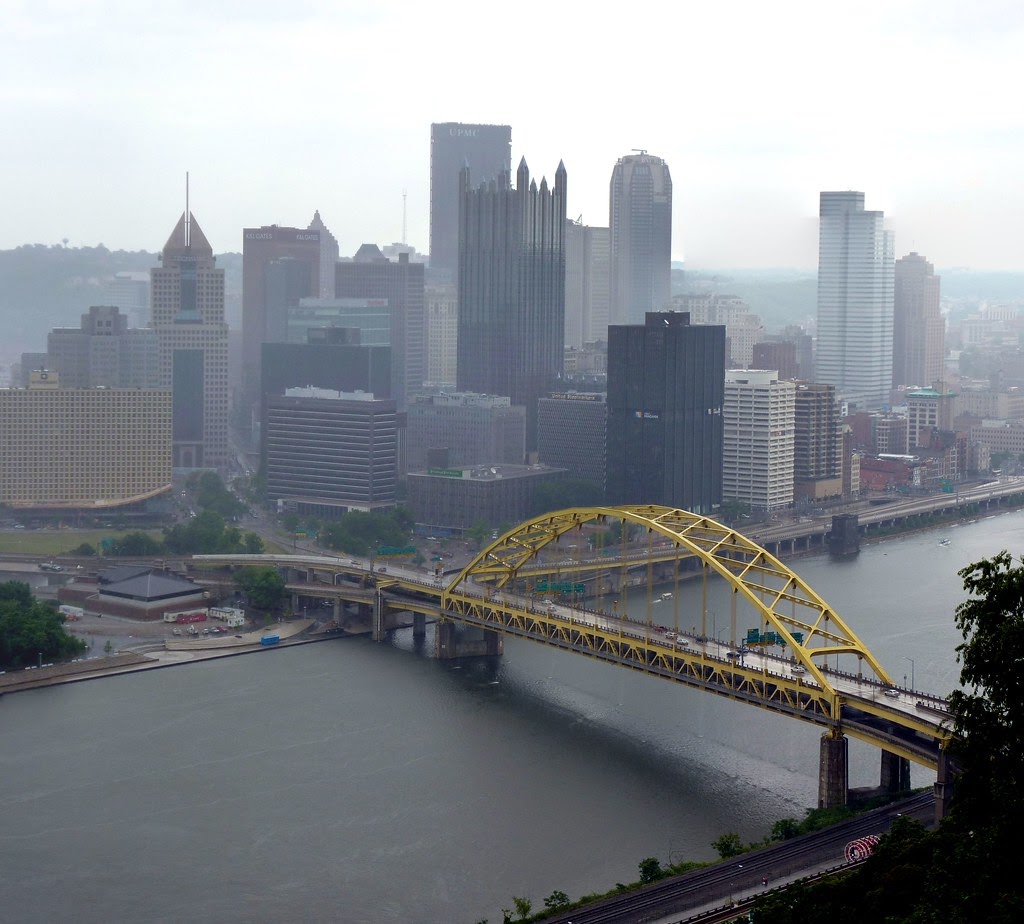
Global warming will make air pollution worse.
The U.S. Global Change Research Program’s Fourth National Climate Assessment warns that unless the nation acts to improve air quality, “climate change will worsen existing air pollution levels. This worsened air pollution would increase the incidence of adverse respiratory and cardiovascular health effects, including premature death.”7
Climate change will worsen air pollution in several ways, including:
• Rising temperatures will speed up the formation of ozone. According to one study, people in the Northeast, Midwest and Southwest will experience three to nine more days of ozone pollution at or above the level the U.S. EPA considers “unhealthy for sensitive groups” annually by 2050 compared to 2000 because of higher temperatures.8
• More frequent and intense storms will cause increasingly severe flooding and wash away roads and hillsides.
The troubled ten
Sadly, most metropolitan areas in Pennsylvania experience elevated levels of air pollution. Below are the 10 most populated metropolitan areas in the state that experienced the most elevated air pollution in 2018.
Recommendations
Air pollution already harms the health of millions of Pennsylvanians and cuts short thousands of lives each year. Climate change will make it worse. The good news is that many of the solutions that address the climate challenge will also improve air quality. Policymakers at the federal, state and local levels should look to implement policies that:
• Reduce emissions from transportation, the largest source of global warming pollution in the U.S. and a major source of air pollution in many communities.9 Policies to reduce global warming and air pollution include expanded use of zero-emission vehicles, regional programs to cap pollution from transportation, and support for active transportation such as walking and biking.
• Support Pennsylvania’s move to join the Regional Greenhouse Gas Initiative and other efforts to move away from fossil fuels — which are a major source of climate pollution in transportation, electricity generation and buildings — and toward the use of clean, renewable energy such as wind turbines and solar panels.
• Clean up Pennsylvania’s dirtiest industrial polluters, including Pittsburgh’s Toxic Ten.
• Strengthen, and strongly enforce, emission and air quality standards to fully protect human health.
•Defend PA’s clean cars program and national CAFE standards from federal attacks
Sources
- Andrew Goodkind et al., “Fine-Scale Damage Estimates of Particulate Matter Air Pollution Reveal Opportunities for Location-specific Mitigation of Emissions,” PNAS, DOI: 10.1073/pnas.1816102116, 30 April 2019, available at https://www.pnas.org/content/116/18/8775.
- Low birth weight: E. Coker et al., “Modeling Spatial Effects of PM(2.5) on Term Low Birth Weight in Los Angeles County,” Environmental Research, 142:354-64, doi: 10.1016/j.envres.2015.06.044, 18 July 2015, and O. Laurent et al., “Investigating the Association between Birth Weight and Complementary Air Pollution Metrics: a Cohort Study,” Environmental Health, 12:18, doi: 10.1186/1476-069X-12-18, 17 February 2013. Pre-term birth: J. Zhu et al., “Exposure to Ambient PM(2.5) During Pregnancy and Preterm Birth in Metropolitan Areas of the State of Georgia,” Environmental Science and Pollution Research, 26(3):2492-2500, doi: 10.1007/s11356-018-3746-8, 24 November 2018, and O. Laurent O et al., “A Statewide Nested Case-control Study of Preterm Birth and Air Pollution by Source and Composition: California, 2001-2008,” Environmental Health Perspectives, 124(9):1479-86, doi: 10.1289/ehp.1510133, 19 February 2016. Stillbirth: P. Mendola et al., “Chronic and Acute Ozone Exposure in the Week Prior to Delivery Is Associated with the Risk of Stillbirth,” International Journal of Environmental Research and Public Health, 14(7): E731, doi: 10.3390/ijerph14070731, 6 July 2017, and Emily DeFranco et al., “Air Pollution and Stillbirth Risk: Exposure to Airborne Particulate Matter during Pregnancy Is Associated with Fetal Death,” PLoS One, 10(3), doi: 10.1371/journal.pone.0120594, 20 March 2015.
- Kelly Bishop et al., The National Bureau of Economic Research, Hazed and Confused: The Effect of Air Pollution on Dementia, DOI: 10.3386/w24970, revised August 2019, available at https://www.nber.org/papers/w24970.
- Ki-Hyun Kim et al., “A Review on the Human Health Impact of Airborne Particulate Matter,” Environment International, January 2015, DOI:10.1016/j.envint.2014.10.005, available at https://www.sciencedirect.com/science/article/pii/S0160412014002992, p. 138.
- Michelle L. Bell, Roger D. Peng and Francesca Dominici, “The Exposure-Response Curve for Ozone and Risk of Mortality and the Adequacy of Current Ozone Regulations,” Environmental Health Perspectives, 114(4): 532-6, April 2006, DOI:10.1289/ehp.8816.
- World Health Organization, WHO Air Quality Guidelines for Particulate Matter, Ozone, Nitrogen Dioxide and Sulfur Dioxide, Global Update 2005, Summary of Risk Assessment, 2006, archived at https://web.archive.org/web/20180430002838/http://apps.who.int/iris/bits…. The WHO’s 8-hour standard for ozone is 100 µg/m3, which is equal to 51 ppb, per Bob Weinhold, “Ozone Nation EPA Standard Panned by the People,” Environmental Health Perspectives, 116(7):A303-A305, July 2008, available at https://www.ncbi.nlm.nih.gov/pmc/articles/PMC2453178/pdf/ehp0116-a00302.pdf. The current federal 8-hour ozone standard is 70 ppb, per U.S. Environmental Protection Agency, The National Ambient Air Quality Standards: Updates to the Air Quality Index (AQI) for Ozone and Ozone Monitoring Requirements, 1 October 2015, available at https://www.epa.gov/sites/production/files/2015-10/documents/20151001_ai….
- Christopher Nolte et al., U.S. Global Change Research Program, Impacts, Risks, and Adaptation in the United States: Fourth National Climate Assessment, Volume II, Chapter 13: Air Quality, 2018, available at https://nca2018.globalchange.gov/downloads/NCA4_Ch13_Air-Quality_Full.pdf.
- L. Shen, L.J. Mickley and E. Gilleland, “Impact of Increasing Heat Waves on U.S. Ozone Episodes in the 2050s: Results from a Multimodel Analysis Using Extreme Value Theory,” Geophysical Research Letters, 43:4017-4025, 25 April 2016, doi:10.1002/2016GL068432, p. 4023. The study looks at ozone above 75 ppb, which is in the range the EPA considers “unhealthy for sensitive groups,” per U.S. Environmental Protection Agency, The National Ambient Air Quality Standards: Updates to the Air Quality Index (AQI) for Ozone and Ozone Monitoring Requirements, 1 October 2015, available at https://www.epa.gov/sites/production/files/2015-10/documents/20151001_ai….
- Largest source of global warming pollution: U.S. Environmental Protection Agency, Sources of Greenhouse Gas Emissions, 2017, accessed 29 November 2019, archived at https://web.archive.org/web/20191122230241/https://www.epa.gov/ghgemissi….
Topics
Find Out More

PennEnvironment and Clean Air Council V. US Steel Motion for Entry and Proposed Consent Decree
Coalition Letter in support of PA Appliance Efficiency Standards 2023-2024


